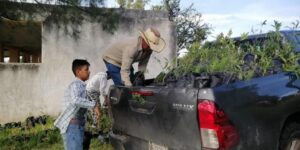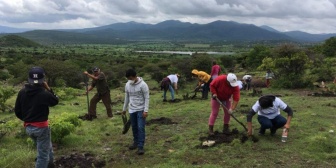San Miguel’s Climate Action Program, an example of environmental rescue
News Category: News and Community News
-
In order to counteract the environmental deterioration caused by extensive cattle ranching and soil erosion, the San Miguel de Allende Climate Action Program was created 15 years ago.
Civil associations, private companies, and the then Municipal Government carried out a diagnosis of the micro-watersheds of the forest areas. This was done with the intention of knowing the degree of environmental impact. Little by little, they generated proposals to consolidate the Climate Action Program of San Miguel de Allende.
By the end of 2018, the program was working in 80 hectares and 2 communities. By 2021, more than 700 people were participating in 15 projects, distributed over 1,500 hectares.

They are dedicated to reforestation and climate solutions.
They have also planted more than 200 thousand species such as magueys and endemic species. They have also carried out tree restoration and soil recovery works.The purpose of the program is to carry out actions that contribute to mitigating the effects of climate change through solutions based on nature and productive reconversion. This is achieved through soil regeneration, reforestation, water catchment, and employment generation.
Joining forces around the environment
Agencies such as Conafor, Semarnat, Tourism, Social Development, and Agriculture have joined the Climate Action Program of San Miguel de Allende. The University of Querétaro, the German Cooperation Agency GIZ, and the UNDP have also supported the preparation of socio-environmental diagnoses and the development of strategies to define climate action.The initiative has supported environmental compensation through the Municipal Green Fund and the development of the Ranchos Forestales.

This has led municipalities such as Comonfort, San Luis de la Paz, and Dolores to initiate their own model. In the same way, the associations are taking steps to make the program regional.
They are always looking to innovate with an action program
Currently, a civil association, the University of Querétaro, and the University of Guanajuato are working on a project to evaluate carbon fixation and achieve formal mitigation. This requires specific carbon sequestration measurements.The researchers are seeking funding to develop a system to measure CO2 capture with agave. Agave has been found to fix the same amount of CO2 as mesquite. However, it will not be until 2023 or 2024 that the result will be known.


Leave a Reply